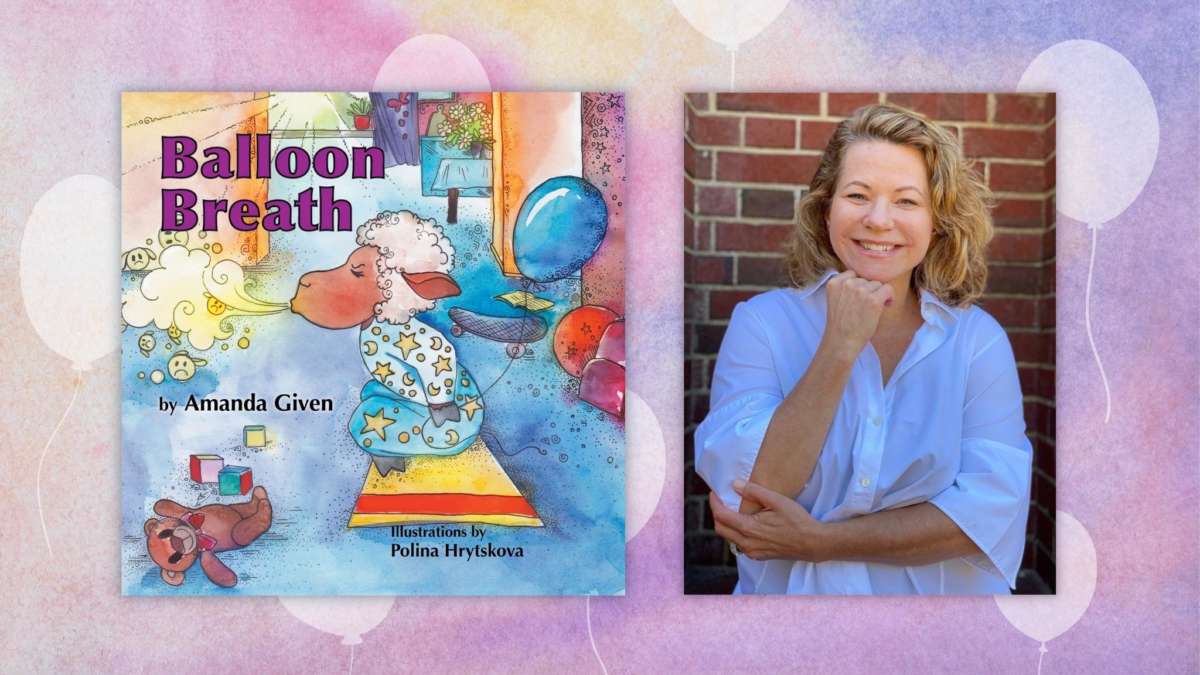Balloon Breath by Amanda Given
“I would like adults to know that the sooner we as a society assist our young ones to open up, the better their ability to communicate their worries will be. I hope that children feel safe to express their feelings.”
That’s what Amanda Given hopes readers will take away from Balloon Breath, a book geared to help children primarily ages 3 to 8 manage their big emotions. The author makes her points through a relatable story of young siblings that don’t always see eye to eye.
Given recently took us behind some of the thinking and learnings in her book:
Q: Why did you write Balloon Breath?
A: When I started teaching yoga to children, tweens, and teens, I noticed that the older and younger children would ask about anxiety or big feelings. All they wanted to do was come into class and just drop to rest. They were overwhelmed. Balloon Breath is a teaching technique for kids. I thought by writing a book it would help them to understand how they could independently regulate their breathing. Using or envisioning a balloon is a perfect tool.
Q: What tricks or techniques have you found to help children open up about their feelings?
A: Young children are in the process of formulating their own ideas of themselves and others. Many children open up about their feelings when they start to trust you. I like being playful with a stuffed animal or one of their favorite TV characters. These anthropomorphic beings become their heroes. We talk about what worries them, what makes them mad or sad. I stick to simple feelings. I also like to incorporate teaching about others’ feelings.
Q: Tell us about the relationship between Lonnie and his brother Curly. What happens to them? What kind of feelings does it trigger? And how does Lonnie deal with it?
A: Curly is Lonnie’s big brother, and he can be bossy. He does things that upset Lonnie. He tears his favorite blanket and switches shows on the TV. Curly asserts himself unkindly toward his younger brother. Lonnie is mad, sad, frustrated and scared of his brother. He’s a much bigger lamb. Lonnie has had a hard time dealing with it. Scarlett, his sitter, is helping him to reorganize his reaction and focus on better thoughts. Lonnie will have to keep practicing balloon breath. It will help him stay grounded in his head. In time maybe Lonnie will learn how to not react to his feelings and stick up for himself. Balloon Breath is a good place to start to assist with his feelings.
Q: How did your own background lead you to where you are now and prompt you to write this book?
A: My background is in Speech Pathology. I always enjoyed working with children and adults. A while back I completed a yoga teacher training program as well as two child-focused yoga programs. I always knew I’d focus on children as soon as I got into my yoga. I had seen children and adults overwhelmed and stressed. They would tell me I’m on medicine for depression and I have lots of anxiety affecting my sleep. Some people have mood disorders, and it’s hard to regulate themselves as well. Mental health is a big topic currently. I was volunteering at a Boys and Girls Club, and I did an activity similar to balloon breath. It was helping the children to use their deep diaphragm breathing. After that class, I thought of my character and formulated my story.
Q: Deep breathing is a major theme in the book. Why is it so important?
A: In our central nervous system, we have two response components. One is ease and calm, then we have fight flight response. There are medical terms for them, but it’s not important. Exhaling calm and happy, positive thoughts eases our nerves. Take in a breath, then calmly and slowly let it out and feel the breath down the back of your throat. This activates the calming component in the CNS to regulate our breathing and in essence our nerves and thoughts.
Q: The book includes a series of activities for parents and children. How do they help promote the ability for children to open up about their feelings?
A: When a person is upset and someone asks them to talk about it, it does help relieve some of the nerves and reactions. I like to have children label their feelings. In the back, I suggest using Pom Pom fluffy balls. They can label about their worries and feelings. Then blow them away. Then have a follow-up conversation about the things they labeled. It’s a starting point to get a conversation going. When children express their concerns safely, it builds trust and also confidence that it’s normal to feel emotions. It also builds better communication skills.
Q: What’s the one major takeaway you hope readers get from the book?
A: The sooner we as a society assist our young ones to open up, the better their ability to communicate their worries will be. I hope that children feel safe to express their feelings. I hope that children learn that this is a normal process of getting older. In the end, this will help them feel empathy for their peers.
Buy this Book!
Amazon




